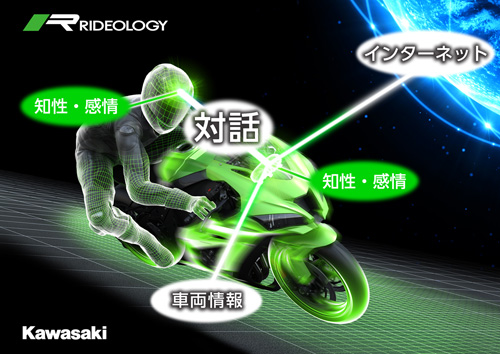https://youtu.be/s8ZcsXYWGgU
Yamaha is testing a robot motorcycle, Kawasaki is developing a bike with artificial intelligence and now an engineering student has built a riderless model-sized motorcycle.
Could the bikes of the future ride themselves and not need rider input?
In the above video, micro-engineering student Eric Unnervik, from the Research institution in Lausanne, explains (in French) how his miniature self-balancing riderless motorcycle works.
It will ride at up to 60km/h using an onboard computer to make steering adjustments for balance, while the controller can tell the model bike where to go via a smartphone app.
He says he plans to produce a full-sized autonomous motorcycle that he claims will be be faster and safer than any human rider.
While a robotic motorcycle would take all the enjoyment out of riding, it could be used for inner-city courier tasks, commuting (where the rider is the passenger) and could be employed to take over from a rider if they make an error of judgement.
As horrible as it sounds, it seems self-riding or riderless motorcycles are coming just as much as self-driving cars are imminent.
In fact, Australian governments have been warned to be ready for partially automated vehicles on public roads before 2020, and highly automated and driverless vehicles the following decade.
This message comes from last month’s Austroads autonomous vehicle (AV) summit in Brisbane attended by leaders from federal and state road and transport agencies, motoring clubs, local government and engineering and industry groups.
Austroads deputy chair Neil Scales says AV’s will “change our lives, as well as our businesses”.
Roads Australia president David Stuart-Watt says AVs would significantly reduce, if not eliminate, road deaths and injuries.
“This will free up the nearly $30 billion we spend each year on road trauma for other areas of health research and treatment. It will also change how we deliver health services to the aged, for example.”
Just as governments have mandated safety devices over the years from seat belts in every car to ABS in European motorcycles, robotic functions could also be mandated in future bikes.
David also says motorists may decide not to own a vehicle in the future, but hire AVs for transport.
“Only this month, it was reported that Ford in the United States was planning to build a fleet of driverless cars for ride-sharing services by 2021, which it (Ford) would potentially own and maintain on their behalf,” he says.
“If we have a fleet of connected and automated vehicles running continuously on our road networks and offering economical fares, why would you want to own a car yourself? And why would you drive your own car to a car park to jump on a train when an AV could take you to the station and probably negate the need to own that car?”
Some people may also like to hire an automated riderless motorcycle or scooter to take commute to work, rather than owning one.
It’s a scary thought!




